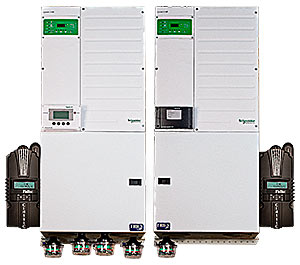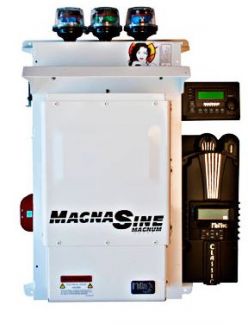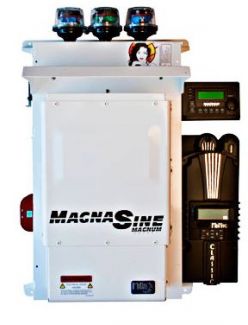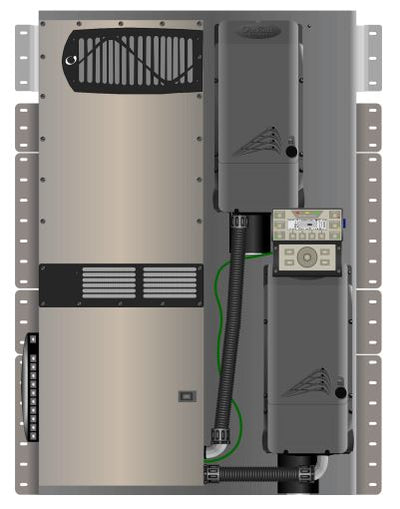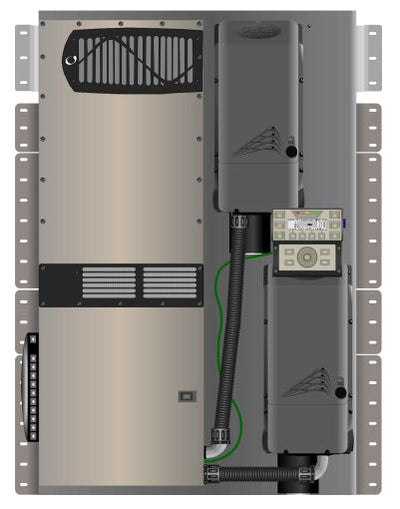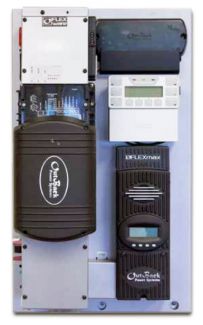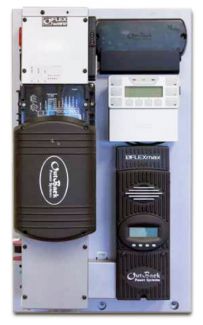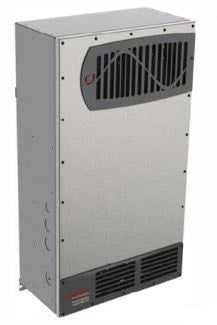Inverters 101

Solar Inverters.
If you're exploring the idea of going solar, no doubt you've heard that solar inverters are essential components for most solar electric systems. Buy why is that? Why are solar inverters so important? And what does a solar inverter do anyway? Are all inverters the same? This page’s focus is to layout some of the basics involved with the different types of inverters and try to answer some of these questions along the way.
What is an inverter?
As you probably know, there are two forms of electricity commonly used today. Solar panels produce the form known as direct current (or DC) electricity. DC is also the form of electricity most batteries store. On the other hand most homes and businesses use alternating current (AC). AC faces less voltage drop over long distances, making it a convenient form to move from power plants to end users. An inverter's main function is to invert DC electricity into AC electricity. Inverters span a range of sizes, from small ones that allow you to run your laptop off your car's cigarette lighter, to larger and more robust inverters designed to work with home or industrial solar electric systems. But there really isn't a generic solar inverter. Why? Because there are different types of solar electric systems, which require different types of solar inverters.
Grid-direct inverter.
A grid-tied or grid-interactive solar electric system is the simplest solar system and requires a specific grid-direct inverter. In a typical residential grid-tied system, the solar PV modules send DC current to the grid-direct inverter, which inverts the DC electricity to AC and then sends the AC to home's electric service panel to feed any electricity demand in the house. If the current house loads are less than the AC output from the inverter (like in the daytime when no one is home), the grid-direct inverter routes the electricity back to the utility (causing the meter to run backwards).A grid-direct inverter must produce a clean, pure "sine-wave" of AC electricity that matches the utility grid's wave form. What's a sine wave? An alternating current electrical wave has the shape of a sine wave. If you see an inverter spec sheet that says "modified sine wave," then you know that inverter cannot replicate the utility's form of electrical wave. That means that some devices will not function (or at least not as well as they could) on electricity from a modified sine wave inverter. Today, essentially all grid-direct inverter replicate's the grid's sine wave shape.Grid-direct inverters must also comply with UL-1741 anti-islanding safety requirements of the NEC (National Electric Code). "UL" means Underwriters' Laboratories. The applicable NEC provision requires that when the utility grid goes down, a grid-direct inverter must automatically disconnect the PV array from the electrical system. This is a safety requirement to help ensure electricity from the PV array doesn't flow back onto the utility lines and injure any utility workers repairing the lines during a power outage. This also means that while the solar panels may be producing power during a day-time power outage, the inverter stops the supply of electricity to the house.
Stand-alone, off-grid inverter.
A stand-alone inverter need not concern itself with the grid because it is only used in solar electric systems where there is no grid electricity present. In this situation, the PV array supplies DC electricity to a DC charge controller that charges a battery bank. When the house demands electricity while the sun is shining and the battery bank is full, the stand-alone inverter tells the charge controller to skip the battery bank and route the DC electricity from the solar panels straight to the inverter which then supplies AC electricity to the house loads. When the array isn't producing (at night), the inverter inverts DC to AC electricity that is stored in the battery bank via the charge controller. Today, most off-grid inverters are really "inverter/chargers" because they also include the functionality to allow charging of the battery bank from an AC source (usually a generator). Why? Because unfortunately, the sun doesn't shine all day, every day in most places. After more than a few days without good sun (clouds, rain, snow), the batteries discharge to their limits and can't be fully charged by the solar panels. Connecting a propane or gas generator to the inverter/charger inputs allows for convenient recharging of the batteries. Some inverter/chargers even automatically start the generator when the inverter senses the need.In the past it wasn't uncommon for off-grid inverters to produce a lower quality wave like a "modified sine wave" or a "square wave" since there was no need to match the utility's wave form. But technology has improved and to ensure AC loads in the house or business are appropriately powered (especially today's sensitive electronics), off-grid inverter/chargers commonly produce clean sine-wave electricity.
Grid-Tied with Battery Back-up.
A grid-tied with battery back-up solar electric system combines components and functionality of a grid-tied system and a stand-alone battery-based system. As a "hybrid" system, it is the most complex system with the most components. The inverter for this system is also more accurately called an inverter/charger because it can connect with an AC source to charge the battery bank when the sun can't do the job. But in the case of a hybrid system, the utility grid is present so the primary AC source used to charge the batteries is the grid. Some models allow a secondary AC source (a generator) to be connected as well. Like a grid-tied inverter, this hybrid inverter also sends excess solar-produced electricity back to the grid (as long as the batteries are fully charged). And when the grid goes down, the hybrid inverter disconnects from the utility grid (like a grid-tied inverter does) and pulls DC electricity from the battery bank, inverts it to AC and sends to a special "emergency" or "back-up" load center or panel. To avoid excessively large and expensive battery banks, a home owner must be selective and only choose important loads to be backed up.
String vs Module level inverters.
For grid-tied solar electric systems, there is another choice to be made. Do you want a single "central" inverter to which all strings of solar panels connect? Of do you want to attach an individual "micro inverter" behind each solar panel that inverts DC to AC at the panel? Or do you want a hybrid style central inverter connected to DC optimizers attached to each solar panel? How to choose?
String inverters.
String inverters are the original workhorse style of the solar grid-tied inverter. These types of inverters are tried and true. And today, they are generally cheaper than module-level micro inverters or DC optimizers. They do lack the ability to optimize and "maximize" the power produced from each solar panel. And they also can't reduce the impact one shaded or impaired panel may have on the array's production. For example, shade on one panel may reduce the production of the entire string of panels in that array. A string inverter can maximize power production of an individual string but not at the module level.
Microinverters.
These devices are little mini inverters that attach behind the module and invert from DC to AC at the module level. This means that that AC wiring connects the solar array to the house, which is cheaper and less subject to voltage drop than DC wiring. But more importantly, having a mini inverter connected to each module means that each module can be adjusted to produce the maximum amount of power possible (called maximum power point tracking or MPPT). So if one panel is shaded, it does not reduce the power produced by the string In general, microinverters should produce a bit more power than string inverters, which is a good thing! Finally, for some of us, our inner geek appreciates the ability to monitor individual panel production on our home laptop or phone. But beyond satisfying our curiosity, monitoring also makes it possible to quickly fix or replace any components minimize downtime.
DC Optimizers.
These types of inverters are a bit of a hybrid. Like a microinverter, a DC optimizer attaches to the rear of each solar panel. And they enable maximum power point tracking (MPPT) for each panel as well. But the module-level optimizer doesn't invert to AC at the panel. Instead each optimizer connects back to a central inverter where AC electricity is actually produced. These devices can be a bit cheaper than a true microinverter while providing similar benefits.
Solar Inverter Pages.
Hopefully this introduction has helped you become a bit more familiar with the terminology and the choices available for solar inverters. Check out here or drill down in the menu above. Give us a call so we can help get you the right inverter for your project
- Tags: Inverters Solar Basics
- Thomas Lindberg

